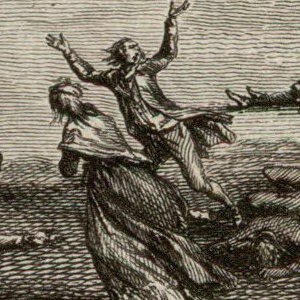Politics

Thälmann Pioneer's Shirt
This shirt is an example of the uniforms worn by children aged 6-14 who were members of the Young Pioneers in East Germany.

Vending Machine
In the United States coin-operated drink machines - generically called "coke machines" - are ubiquitous consumer objects regularly punctuating our everyday landscapes. We feed them our money and out roll individually packaged liquid refreshments.
Oh Richard, Oh, My King!
This aria from the Gretry opera, Richard the Lion–Hearted, was adopted by royalists during the early years of the French Revolution. The song’s accusation that the king had been abandoned by all but his most devoted followers made it a suitable counter–revolutionary anthem.
It’ll Be Okay
Popular during the early years of the French Revolution, this song’s lively tune and repetitive chorus expressed revolutionaries’ hopefulness about the future. Singers manipulated its malleable lyrics to address a broad range of topical issues.
Hymn of 9 Thermidor
This hymn commemorates the overthrow of Robespierre and the Committee of Public Safety by the men of the National Convention during the French Revolution. It had its debut performance on the first anniversary of that event (27 July 1795).
Hymn of 21 January
With lyrics drawn from a Republican Ode composed by the revolutionary poet Lebrun in 1793, this hymn commemorates the execution of France's Louis XVI.
Hymn for the Festival of Marriage
Although festivals drew much smaller audiences during the final years of the Revolution, the government continued to celebrate them. Now, however, they tended to commemorate apolitical events: thus a festival, and hymn, devoted to the subject of marriage.

Drowning in the Loire by Order of the Fierce Carrier
On 6–7 December 1793, Jean–Baptiste Carrier, a deputy sent by the Convention to suppress the insurrection at Nantes, accepted, if he did not in fact welcome, a measure proposed by the local Revolutionary Tribunal to fill seven boats with an estimated 200–300 prisoners (not all of them yet convict

Fusillades at Lyon, Ordered by Collot–D’Herbois
Lyon’s rebellion against the central government in September 1793 had terrible repercussions that seemed only to worsen with the initiation of collective trials and immediate executions by firing squad.

Siege and Taking of the City of Lyon
In September 1793, in response to the unwillingness of the municipal government of Lyon to enforce the legislature’s laws, the Republic sent the deputies and Committee of Public Safety members Georges Couthon and Jean–Marie Collot d’Herbois with a republican army to lay siege to the city and dest